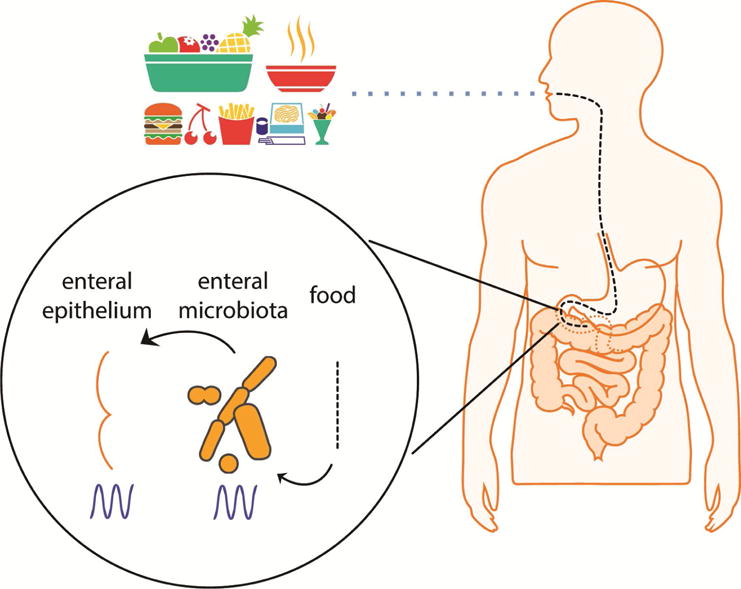Figure 3.

Circadian clock and the enteral microbiome. The circadian clock imposes a rhythm in the abundance of enteral microbiota mainly through feeding rhythms. In turn rhythms in the composition and localization of the enteral microbiota generate rhythmic exposure of the intestinal epithelium to different bacterial species and their metabolites. This rhythmic exposure modulates circadian gene expression in enteral epithelium and remote tissues such as the liver.
